Hindsight is 20/20—especially when it comes to home design. The early 2020s brought a wave of trends that felt fresh and exciting in the moment but haven’t exactly stood the test of time. From impractical aesthetics to styles that were overdone on social media, many homeowners now look back and wonder, “What was I thinking?” If you’re planning a refresh or just curious what’s fallen out of favor, here are 12 home design trends from 2020 that people are already regretting.
1. Overly Industrial Interiors
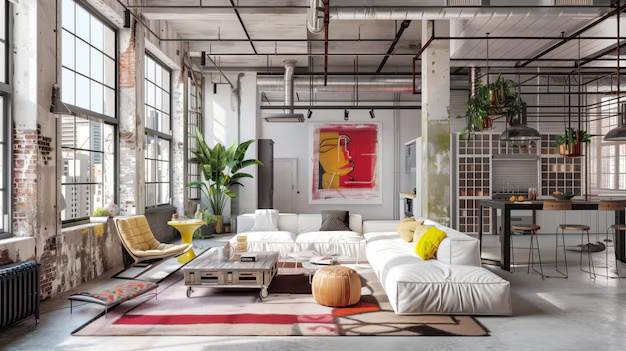
Exposed pipes and Edison bulbs were everywhere in 2020, but the style hasn’t aged well. The industrial aesthetic, once celebrated for its raw, utilitarian vibe, now feels stark and impersonal in residential settings. According to Better Homes & Gardens, homeowners are gravitating toward softer, cozier designs that incorporate natural materials like wood, linen, and stone. Layering textures, adding warm lighting, and mixing industrial elements with contemporary features are now common approaches to updating these spaces.
The rigidity of purely industrial interiors also makes them less adaptable to evolving personal tastes or family needs. Over time, the harshness of the style can feel cold and unwelcoming, particularly in spaces meant for relaxation. Designers are finding ways to retain the character of industrial elements while softening the overall look. This creates spaces that still feel unique but are far more livable and versatile.
2. Open Shelving in Kitchens
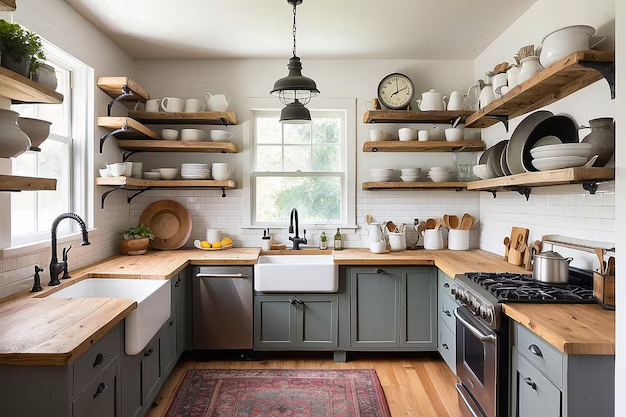
The minimalist look of open shelving seemed like a dream, but the reality has been messy. Homeowners quickly realized that dust, grease, and clutter are constant battles. Open shelves require regular cleaning to prevent buildup and need careful organization to maintain a visually appealing look. Closed cabinets are making a comeback for their practicality and cleaner appearance.
According to Houzz, many homeowners now prefer a combination of open shelving for decorative items and closed cabinetry for everyday essentials. This mix offers a way to display beautiful dishware while keeping less attractive, practical items hidden. Additionally, open shelving often limits storage options, making it challenging for larger households or those with extensive kitchen tools. While they may work well in show kitchens or as an accent, most homeowners find that traditional cabinets are better suited for the demands of daily life.
3. Grey Everything
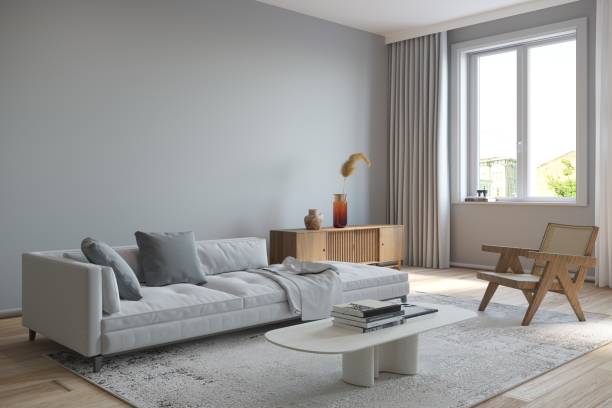
From walls to furniture, grey tones dominated home design in 2020. Now, many people feel their homes look cold and lifeless, lacking warmth and personality. Warmer neutrals and earthy tones are replacing this overused trend, bringing a sense of comfort and depth to interiors. According to Elle Decor, shades like beige, taupe, and soft green are gaining popularity for their ability to create a cozy, inviting atmosphere.
Designers are also incorporating pops of color through accessories like throw pillows, rugs, and artwork, which help brighten up formerly monochromatic grey rooms. The shift away from grey represents a broader design movement toward layered, personalized spaces. Homeowners want interiors that feel warm and expressive rather than stark and impersonal. While grey will always have its place in certain palettes, the emphasis now is on blending it with richer tones for a more balanced aesthetic.
4. Barn Doors

Sliding barn doors were a hallmark of modern farmhouse design, but their impracticality is now evident. While they add visual interest and rustic charm, they often lack the sound insulation and privacy that traditional hinged doors provide. This makes them unsuitable for spaces like bedrooms, bathrooms, or offices where noise control and privacy are essential. Additionally, their sliding mechanism can be prone to issues like misalignment or difficulty opening smoothly over time. According to Real Simple, homeowners are increasingly opting for traditional doors that offer better functionality without sacrificing style.
Many are choosing paneled or solid-core doors that integrate seamlessly into various design aesthetics. Barn doors, while still appealing in certain settings, work best as decorative features in areas where privacy is less of a concern, such as closets or pantries. As the modern farmhouse trend continues to evolve, barn doors are becoming less of a staple and more of a niche design element.
5. Statement Walls with Peel-and-Stick Wallpaper
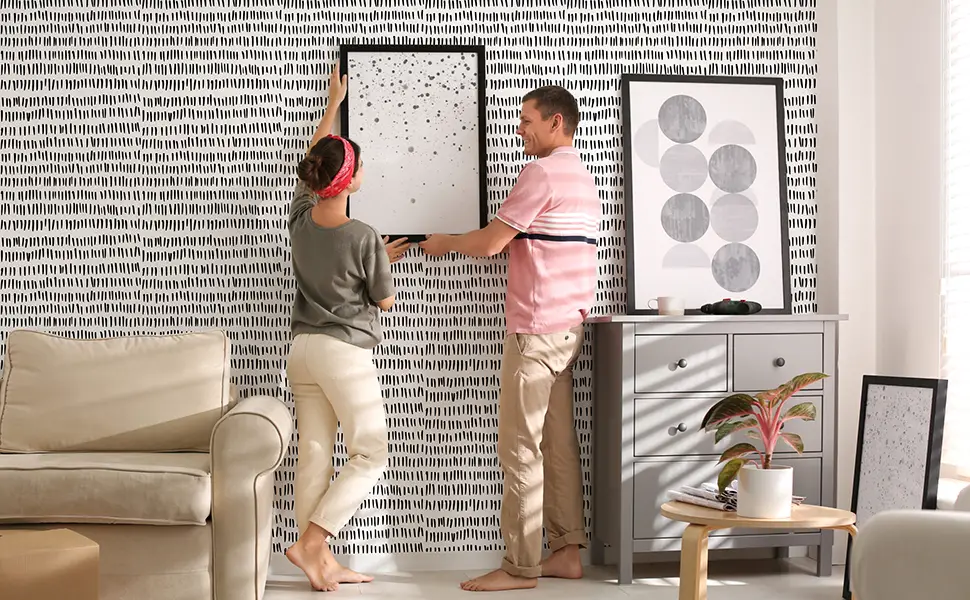
Peel-and-stick wallpaper was a quick and trendy way to create accent walls, but the fad hasn’t lasted. While it offered a low-commitment option for renters and homeowners, many designs feel dated or overly bold now. According to House Beautiful, the popularity of timeless paint colors and subtle wall textures is overtaking this trend. Another issue is that removal can still cause damage, especially if the wallpaper has been up for a long time or applied to certain surfaces.
For those seeking more permanent or sophisticated solutions, textured plaster, wainscoting, or statement art pieces are now in vogue. Peel-and-stick wallpaper also often struggles to hold up in areas with humidity or frequent use, such as bathrooms and kitchens. While it remains a fun option for short-term design updates, it’s increasingly being seen as a less durable and versatile choice. The focus now is on design elements that enhance longevity and adaptability in home decor.
6. All-White Kitchens
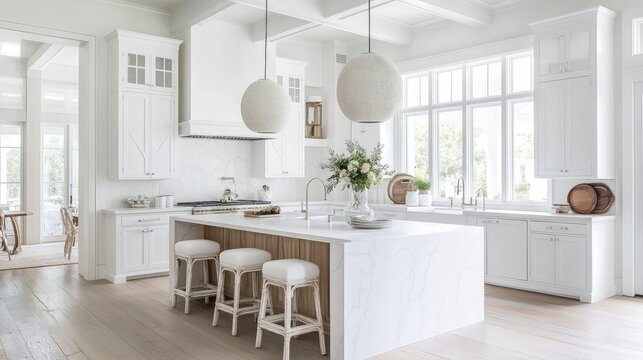
White-on-white kitchens were the epitome of sleek design, but they’ve proven to be high-maintenance. Stains, smudges, and constant cleaning make this look more work than it’s worth, especially in high-traffic households. Homeowners are now leaning toward kitchens with contrasting tones or colorful accents to add personality and warmth. Darker cabinetry, colorful backsplashes, and natural wood elements are becoming more popular for their practicality and aesthetic appeal.
These updates not only reduce the need for frequent cleaning but also create a more inviting atmosphere. All-white kitchens can also feel sterile and lack the character that more layered designs offer. By mixing materials and finishes, homeowners can achieve a space that feels both functional and stylish. This shift reflects a broader trend toward personalized design that balances visual appeal with everyday usability.
7. Faux Shiplap Walls
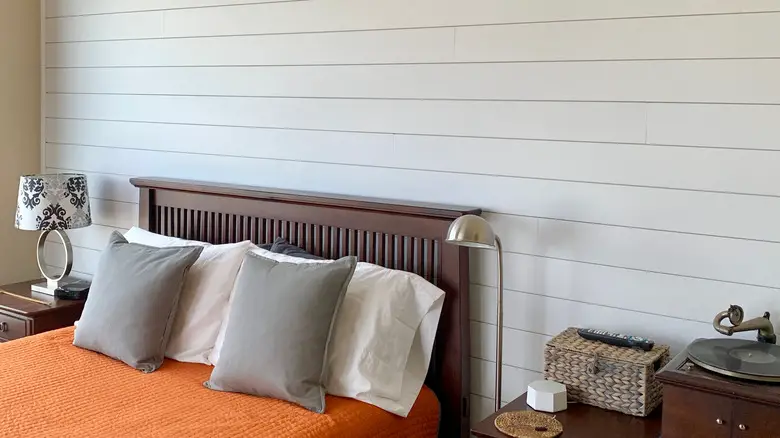
DIY shiplap became the go-to for adding character to walls, but it often looks cheap and out of place, particularly in homes without a farmhouse style. The trend has been overdone, leading many homeowners to seek alternatives that feel more genuine and timeless. Authentic wood paneling or unique wall treatments like reclaimed wood or beadboard are replacing faux shiplap. One issue with faux shiplap is its tendency to warp or deteriorate over time, especially when made from lower-quality materials. This undermines the rustic charm it’s supposed to convey.
Additionally, its widespread use has made it feel less special, reducing its appeal in modern home design. Instead, homeowners are exploring textured walls, bold paint colors, or wallpaper with subtle patterns to create interest. These options offer greater versatility and can adapt to a range of interior styles. Faux shiplap now feels more like a relic of the past than a fresh design choice.
8. Boho Overload
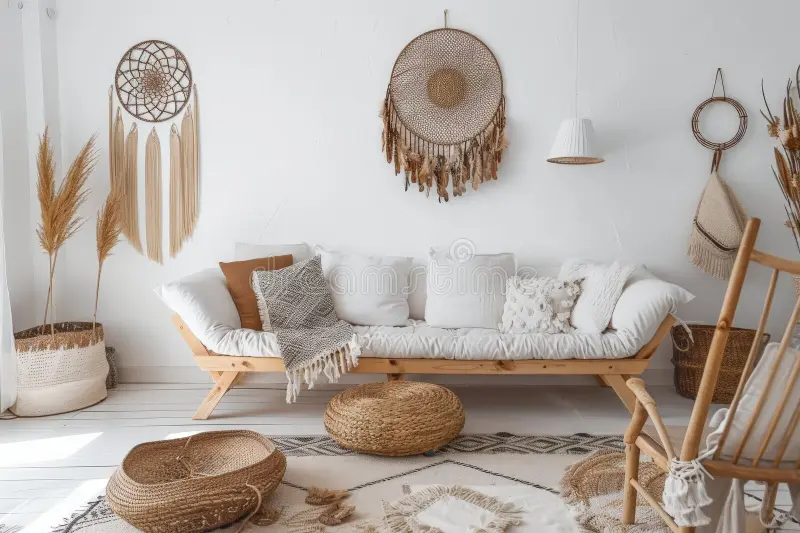
Macramé everything, wicker furniture, and an abundance of plants created a cluttered boho aesthetic that dominated home decor trends for years. While individual elements of boho design remain in style, the all-out approach often feels chaotic and overwhelming. Spaces overflowing with textures, patterns, and greenery can lack cohesion, making them harder to maintain and less functional. The trend is shifting toward more balanced and curated interpretations of boho design.
By selectively incorporating boho-inspired pieces like a macramé wall hanging or rattan chair, homeowners can add warmth and personality without overdoing it. Decluttering and using neutral backdrops can help highlight standout boho elements, creating a more harmonious space. The focus now is on blending boho with other styles, like Scandinavian or mid-century modern, for a look that feels intentional and serene. This shift prioritizes comfort, simplicity, and versatility over maximalism.
9. Black-Framed Windows
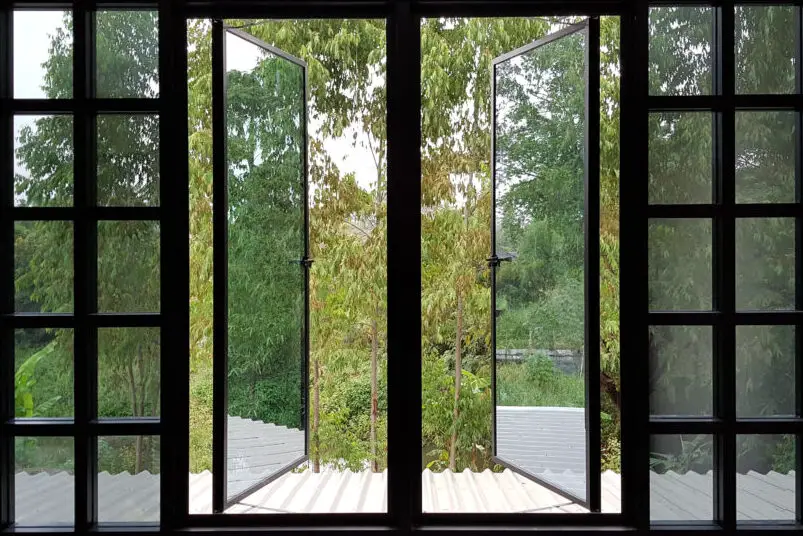
Black-framed windows were once hailed as the ultimate modern feature, but they’ve proven polarizing over time. While striking in contemporary or industrial-style homes, they can feel too harsh or out of place in more traditional spaces. The bold frames can also limit design flexibility, as they don’t always pair well with lighter or softer interior palettes. Many homeowners are now opting for window designs with softer, more versatile tones like white, bronze, or natural wood.
Black frames also require more maintenance, as dirt and smudges tend to stand out more visibly. Furthermore, their dramatic look may not age well, potentially affecting resale value in the future. For those who still love the modern aesthetic, incorporating black frames sparingly or as part of a mixed-material approach can help balance the look. Ultimately, windows that blend seamlessly into a home’s design and provide timeless appeal are becoming the preferred choice.
10. Concrete Countertops
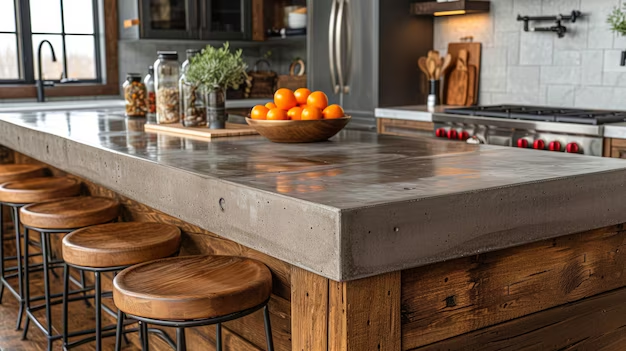
Concrete countertops gained popularity for their industrial vibe and customizability, but their practicality has come into question. They are prone to cracks, stains, and general wear and tear, making them a high-maintenance choice. Homeowners have found that even with regular sealing, the porous nature of concrete can lead to persistent issues. Durable materials like quartz and butcher block are becoming more popular for their low maintenance and timeless appeal.
Concrete’s cold, stark appearance also doesn’t suit every design aesthetic, leaving some spaces feeling uninviting. While still appreciated in certain industrial or minimalist settings, concrete countertops are increasingly being replaced with materials that offer both beauty and functionality. Alternatives like natural stone or engineered surfaces provide similar aesthetic benefits without the drawbacks. These newer options are better suited to the demands of everyday life while maintaining a stylish look.
11. Floating Vanities

Floating vanities were initially lauded for their sleek and modern appearance, but they’ve proven less practical for everyday use. Their limited storage capacity frustrates homeowners who need functional bathroom solutions. The open space underneath, while visually appealing, can accumulate dust and require frequent cleaning. Full vanities with ample storage are making a strong comeback as homeowners prioritize practicality over minimalism. These traditional vanities also allow for better organization, making bathrooms feel more functional and clutter-free.
Floating vanities work well in certain modern designs but are less suited for families or shared bathrooms with greater storage needs. Additionally, their installation can be more complex, requiring wall reinforcements to support the weight. Homeowners are now looking for vanities that strike a balance between style and usability, with designs that complement their bathroom’s overall aesthetic.
12. Overdone Smart Home Features
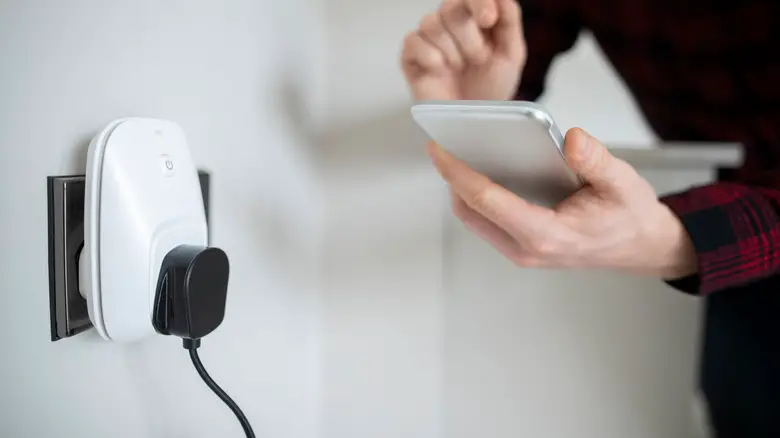
Smart everything—from light bulbs to toilets—felt futuristic in 2020, but many gadgets have proven unnecessary and overly complicated. Homeowners are growing frustrated with devices that malfunction, require constant updates, or fail to integrate seamlessly into daily life. The focus is now shifting toward intuitive, essential smart home upgrades that add real value. Features like automated lighting, security systems, or energy-efficient thermostats remain popular because they enhance convenience and reduce costs.
In contrast, over-the-top tech, such as smart refrigerators with excessive features or overly complex home assistants, is falling out of favor. Privacy concerns have also made some homeowners hesitant to adopt devices that collect and store data. Today’s smart home trends emphasize simplicity, functionality, and security, avoiding the excesses of the past. This approach ensures that technology serves as a helpful tool rather than an unnecessary complication in modern living.
